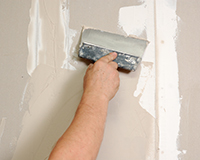Keeping Up Shop
When you enter into a commercial lease, it is imperative that you know what your maintenance and repair obligations are, and that you do not bind yourself to onerous responsibilities when negotiating the tenancy agreement.
What are the standard covenants in a tenancy agreement relating to repairs?
Most commercial tenancy agreements contain clauses that require the tenant to:
- Keep the premises in good condition throughout the lease
- Renew or replace defective parts (a quick patch-up will not suffice)
 A common type of lease used for business premises is the “Full Insuring and Repairing” Lease (or FRI lease). Under FRI leases, the tenant is responsible for insurance for the property and putting right any disrepair at the start of the lease.
A common type of lease used for business premises is the “Full Insuring and Repairing” Lease (or FRI lease). Under FRI leases, the tenant is responsible for insurance for the property and putting right any disrepair at the start of the lease.
If the agreement states the tenant must “keep” the premises in repair this means the tenant has an obligation to carry out repairs needed, even if those repairs were needed at the start of the lease.
Which parts of the building is the tenant responsible for?
This must be set out clearly within the lease. The terms ‘property’ or ‘premises’ should be outlined in the definition section of the lease and provide the boundaries of what areas tenants are responsible for. If the covenant relating to repairs states that the tenant is responsible for keeping the ‘property’ in good repair, then the scope of responsibility will be found in the definition section.
If you are leasing part of a building (for example, an office in an office block), your repair obligations will most likely extend to the ‘internal envelope’ of the space your business is taking. A landlord will typically recover the costs of repairing common parts of the building, such as the stairwell, lobby, lifts etc. from tenants by way of a service charge.
How are service charges calculated?
Generally, the landlord will estimate the annual cost of maintaining and providing services to the building and will then divide this between the tenants; with some tenants paying a higher proportion than others depending on factors such as which common parts they utilise and the size of the internal area that they occupy. The tenant will usually pay one quarter of the annual fee along with their quarterly rent, on the same day that rent payments are due.
At the end of the year, the landlord will confirm the cost of the actual services. If common repair costs have exceeded what is in the service charge ‘pot’, tenants will be asked to contribute more. If the landlord’s estimate is less than the actual amount due, the surplus will be carried forward to the following year.
What steps can I take to ensure my repair covenant is fair and reasonable?
The first step is to never sign a commercial lease agreement without first being reviewed by a commercial property solicitor. Remember, the landlord will initially try to make you pay for everything. It is your responsibility to negotiate robustly to ensure the tenancy agreement is favourable to you as far as possible.
It is a good idea to have a survey of the premises conducted before you sign the lease and have photographs and descriptions of the state of the space you plan to occupy. These can then be added to a ‘Schedule of Condition’, which will be attached to the lease and relied on to ensure you are not responsible for making repairs that were required before you took over the tenancy.
Finding a good commercial property solicitor before entering a commercial tenancy is imperative. To locate one in your area, start searching Solicitors Guru today.